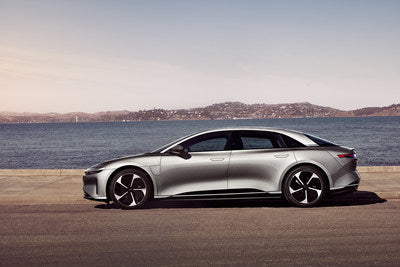Tesla’s Spring 2025 software update brought a host of new visual and driver-assist enhancements to newer vehicles. However, a recent disclosure by Tesla industry insider Sawyer Merritt has revealed that older Model 3 and Model Y vehicles equipped with Hardware 3 (HW3) and Intel Atom processors were excluded from many of these key features, signaling an accelerating software divide between Tesla’s legacy and next-generation hardware platforms.
What Happened in the Spring 2025 Update?
The Spring 2025 update—software version 2025.14.1—introduced several forward-facing features including:
-
Expanded blind-spot camera views
-
Enhanced visualizations for pedestrian awareness
-
Improved driver monitoring alerts
-
Upgraded pillar camera recordings
-
Refined autopilot path rendering
Yet, these updates are largely inaccessible to Tesla vehicles with Intel Atom processors, most of which were shipped between 2018 and early 2022. This includes the majority of HW3-equipped Model 3 and Model Y vehicles.
Sawyer Merritt’s Statement
Sawyer Merritt, a well-known Tesla commentator and shareholder, shared this information in a widely circulated post on X (formerly Twitter):
“Tesla’s Spring update will NOT include new visual features for HW3 cars with Intel Atom chips. These systems simply can’t handle the rendering demands. Tesla is focusing feature development on newer Ryzen and HW4 platforms.”
This statement, though unofficial from Tesla itself, was corroborated by multiple users and early-access testers who confirmed the absence of these features on their older hardware setups.
Why Are Intel Atom Systems Falling Behind?
The limitation lies in the media control unit (MCU)—specifically, the Intel Atom-based MCU that powers the infotainment and visualization systems in HW3-era Teslas. The Atom chip, while sufficient for basic navigation and interface rendering at the time of launch, lacks the computational capacity to support:
-
Real-time rendering of 3D environments
-
Simultaneous video streams from multiple cameras
-
High-resolution driver monitoring feedback
While Tesla has made efforts to compress models and optimize performance on older platforms, these solutions can only go so far without compromising stability.
Implications for HW3 Owners
This development is the latest in a series of signs that HW3 vehicles are reaching the limits of their upgradability:
-
Many HW3 vehicles still receive security patches and minor usability improvements, but are no longer part of major feature rollouts.
-
Tesla previously promised that all vehicles since 2016 had “the hardware necessary for full self-driving,” but that claim is now widely seen as outdated or overly optimistic.
-
Owners who purchased the Full Self-Driving (FSD) package now face limited functional advancement on HW3 platforms.
Tesla has not yet announced an official upgrade path for these vehicles, though Elon Musk has previously mentioned that HW3 FSD buyers “will need hardware replacement at some point.”
Who Still Gets the Full Features?
The Spring 2025 feature set is fully supported on:
-
Vehicles with HW4 and AMD Ryzen processors
-
Late-2022 and newer builds of Model 3/Y
-
All 2023–2025 Model S and X refresh variants
These systems offer significantly higher CPU and GPU capabilities, enabling them to support Tesla’s evolving neural nets and user interface enhancements.
What’s Next for HW3 Owners?
Many Tesla owners are calling for:
-
Free MCU and HW4 upgrades for vehicles that purchased FSD
-
Transparency from Tesla about the future of HW3 support
-
Trade-in incentives for those looking to upgrade to newer platforms
Until Tesla formally addresses these concerns, a growing portion of its customer base will be left with limited access to software improvements—despite being promised full self-driving capability years ago.
Conclusion
Sawyer Merritt’s disclosure underscores a larger shift within Tesla’s software strategy: backward compatibility is no longer guaranteed as the company moves quickly into higher-performance platforms like HW4 and beyond. For HW3 and Intel Atom users, this spring may mark the first clear moment of separation from Tesla’s innovation frontier.
If Tesla fails to offer a viable upgrade path or meaningful support transition, it risks alienating a core group of early adopters who invested in the vision—and the hardware—Tesla once promised would lead the autonomous revolution.
Author: Lay Wen
Recommended Reading: Tesla News








Share:
Tesla Leaves HW3 Owners in Limbo After Abandoning Full Self-Driving Support
Tesla HW3 Update: What’s Happening in 2025